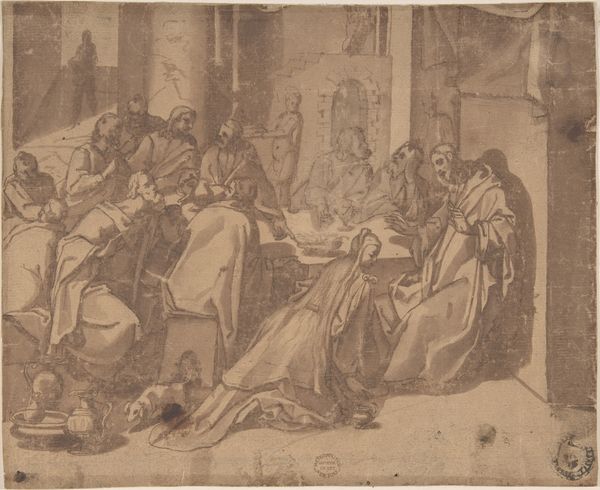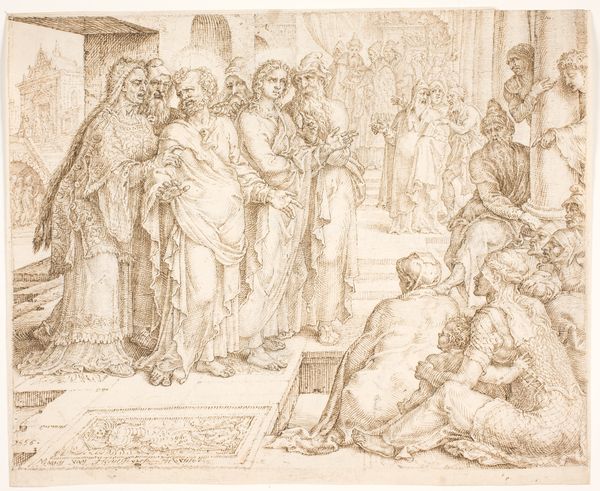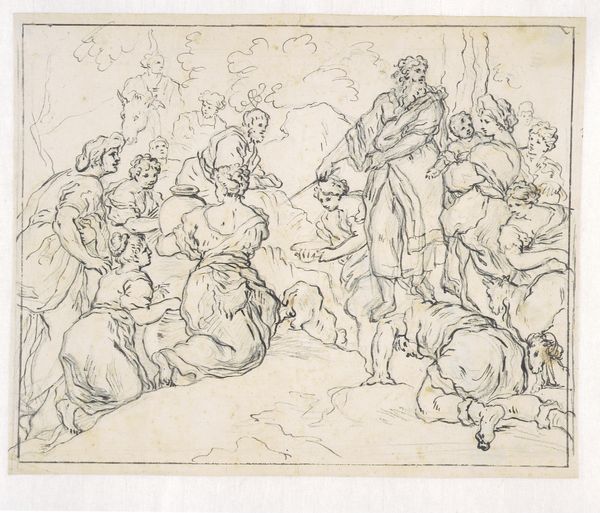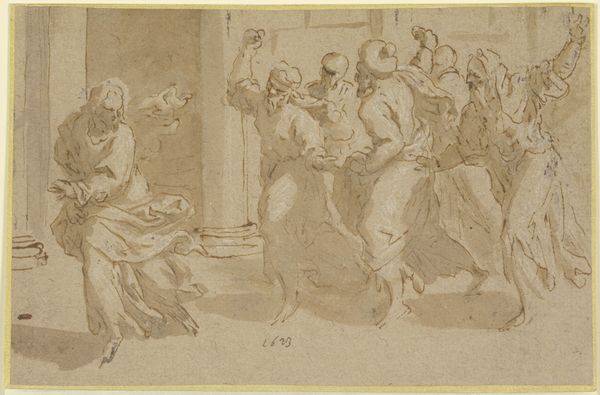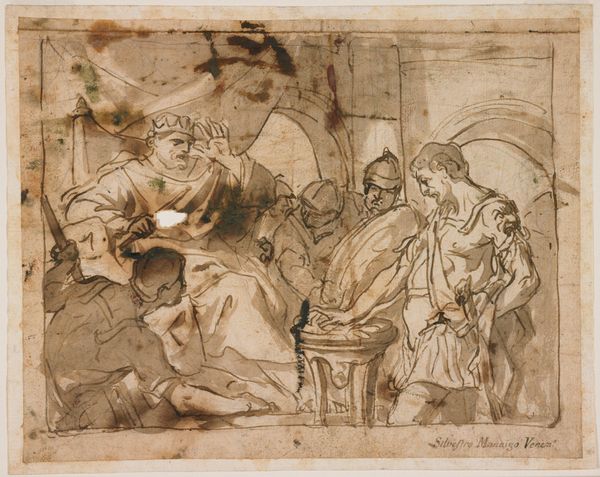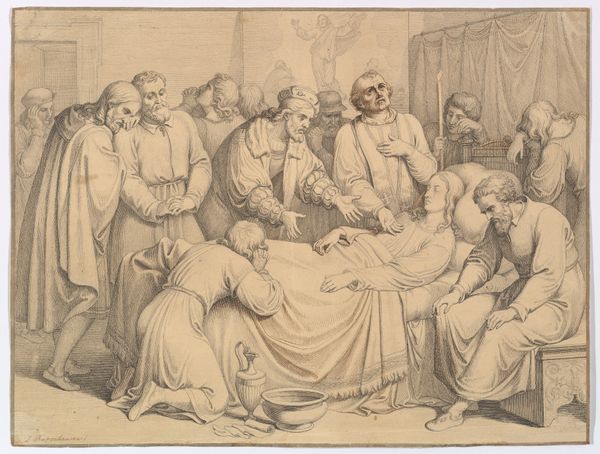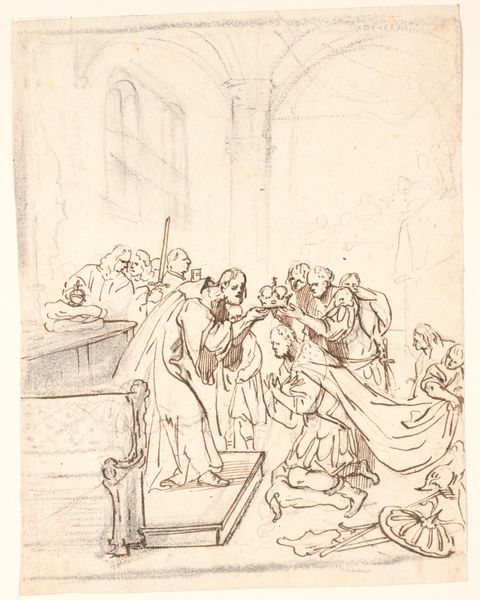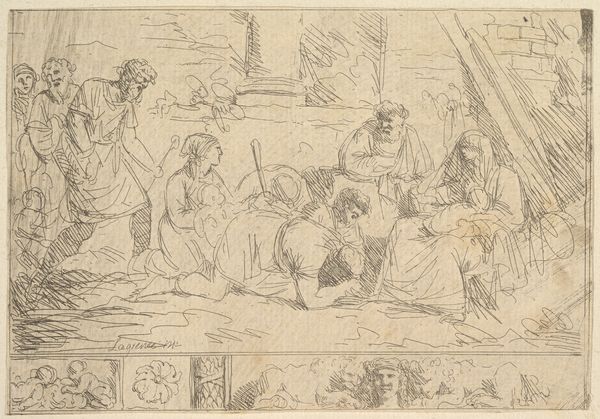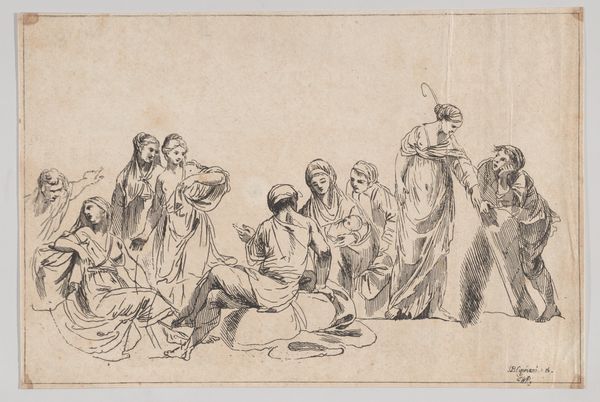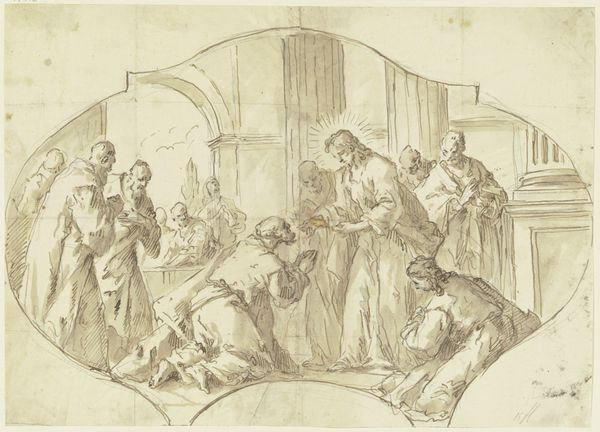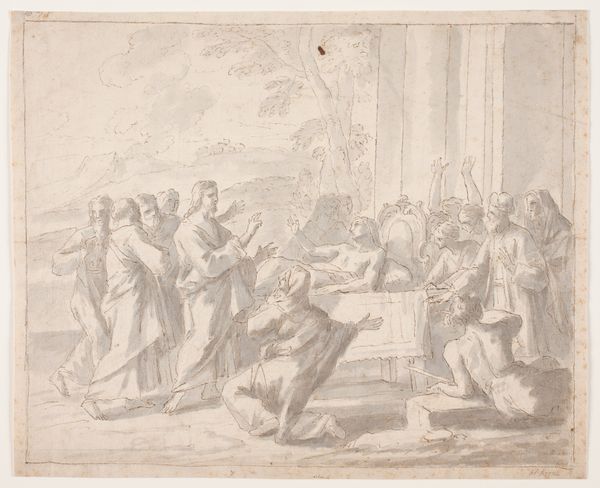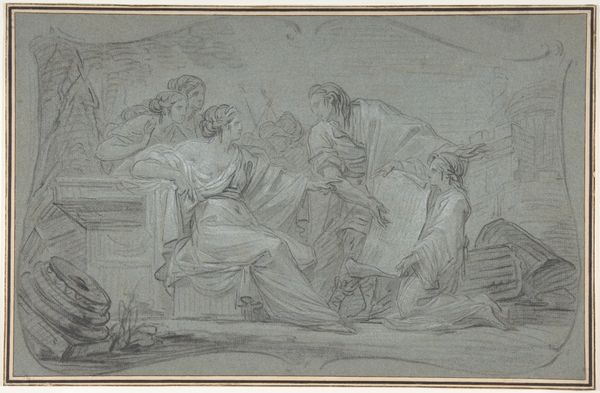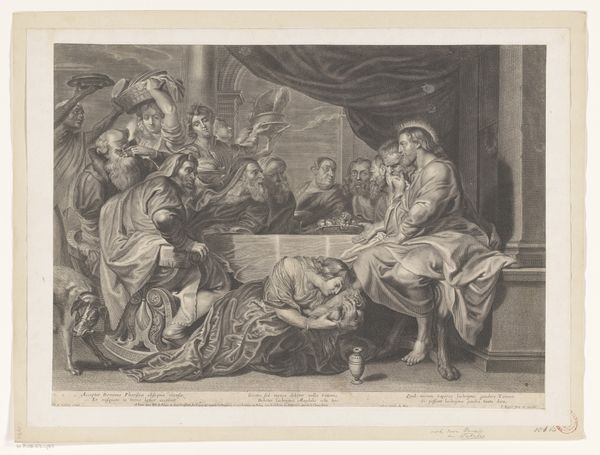
Penitent Woman Anointing the Feet of Christ at the Table of Simon the Pharisee 1548 - 1628
0:00
0:00
drawing, ink
#
drawing
#
ink drawing
#
narrative-art
#
figuration
#
11_renaissance
#
ink
#
italian-renaissance
#
christ
Dimensions: 8 x 11 15/16in. (20.3 x 30.3cm)
Copyright: Public Domain
Editor: We are looking at Jacopo Palma the Younger’s ink drawing, "Penitent Woman Anointing the Feet of Christ at the Table of Simon the Pharisee," dating from 1548 to 1628. There's such a dynamism to this piece. The sketch-like quality really makes it feel alive. What's your take on it? Curator: It’s fascinating how Palma the Younger uses this very active scene to explore complex social and gender dynamics. Consider the story being depicted – a “penitent woman,” often conflated with Mary Magdalene, challenges societal norms by publicly anointing Christ's feet. It prompts us to question: Who gets to define piety, and who is excluded from positions of respect and power? How does the drawing capture the tension between judgment and forgiveness, societal expectations, and personal transformation? Editor: That’s a really interesting point – the figures around the table do seem to be reacting quite strongly. Is Palma the Younger commenting on this tension directly, or is there something else going on? Curator: I think the visual choices—the arrangement of figures, the lines indicating movement—speak to the disruption this woman introduces. We should examine the positioning of Christ within that dynamic as well. In the context of the 16th and 17th centuries, during the Counter-Reformation, the portrayal of women, especially those challenging established orders, was a battleground. Was Palma sympathetic, critical, or simply observing? Editor: So much to unpack here! This drawing now seems like more than just a biblical scene. Curator: Exactly! Art is never created in a vacuum. Thinking about its time of creation encourages us to explore and challenge historical assumptions about the artist, their subject and ourselves. What will we, in our contemporary roles, do to interrogate accepted histories and transform our understanding of power and marginalization? Editor: It definitely gives me a lot to consider! Thanks for shedding a light on this.
Comments
No comments
Be the first to comment and join the conversation on the ultimate creative platform.
